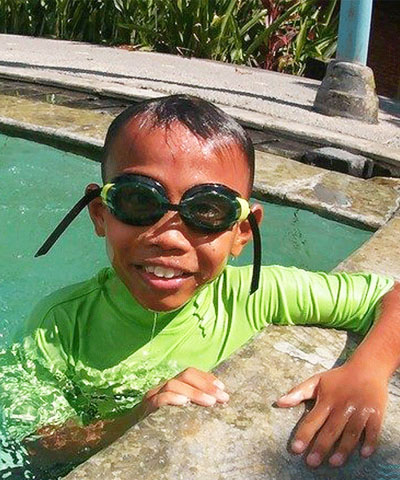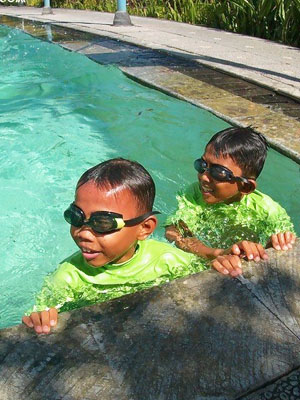Master the Water. On Your Terms.
Adults Swim Lesson
Build confidence and improve your skills in the water with personalized swim lessons for adults in Bali. Whether you’re a beginner or looking to refine your technique, our patient, 1-on-1 approach is tailored to help you feel comfortable and empowered in the water. Start your journey to becoming a stronger, safer swimmer today


Beginner Swimmers
It’s never too late to learn to swim. Our adult beginner lessons are designed specifically for those with little to no experience in the water. In a patient and supportive environment, we will guide you step-by-step at your own pace. Our goal is to help you build true confidence, master the fundamentals of water safety, and discover how enjoyable the water can be.
The Power of Float, Kicking, Paddle & Breathing
Float is the foundation of all swimming. Without proper float, all other movements are wasted energy.
| Effortless Propulsion | It reduces drag (resistance). When your body is flat and horizontal, you slice through the water instead of plowing against it, allowing you to move further with less effort. |
| Conserving Energy | Proper buoyancy means the water is supporting you, not the other way around. This saves energy normally spent on fighting gravity, which is crucial for long-distance swimming. |
| Balance & Stability | A good float centers your body's mass. This stability makes it easier to engage your core and keep your head steady, which is essential for effective stroke mechanics and breathing. |
Kicking provides essential propulsion, but its most critical power is in stabilizing and controlling the body.
| Propulsion & Speed | The rhythmic, continuous kick (like the flutter kick in freestyle) provides a constant, albeit smaller, source of forward momentum, helping to maintain speed between paddle strokes. |
| Body Rotation & Balance | The kick acts as an anchor and a stabilizer. It helps keep your body in a straight line and is key to the efficient side-to-side rotation needed for the freestyle stroke. |
| Core Connection | A powerful kick doesn't come just from the knees; it initiates from the hips and core. This engages the largest muscles, linking the lower and upper body for a more powerful, full-body stroke. |
The paddle (the pull and push of the arms) is the primary engine of forward motion and speed.
| Forward Momentum | The pull is responsible for about 90% of your forward speed. A strong, intentional "catch" (when the hand first anchors in the water) and a deep "pull-through" are what drive you through the water. |
| Leverage & Reach | Extending your arm forward gives you maximum leverage. A long, streamlined reach out front reduces dead spots in your stroke and keeps your body extended, aiding the float. |
| Rhythm & Timing | The arms set the rhythm and timing for the entire stroke. They coordinate the rotation of the body and the breathing pattern, turning the individual movements into a smooth, efficient whole. |
Breathing is the most common roadblock for new swimmers, yet its power is essential for endurance and mental comfort.
| Fuel for Endurance | Oxygen is the fuel. Efficient breathing ensures your muscles get the oxygen they need to avoid fatigue, enabling you to swim further and longer without stopping. |
| Stroke Rhythm | Breathing dictates the timing and flow of the stroke. A controlled, rhythmic breath (exhaling fully underwater and inhaling quickly to the side) prevents jerky movements and keeps the body streamlined. |
| Mental Comfort | Knowing you can easily get a breath calms anxiety. It allows a swimmer to relax, focus on technique, and enjoy the water, turning swimming from a stressful activity into a meditative one. |